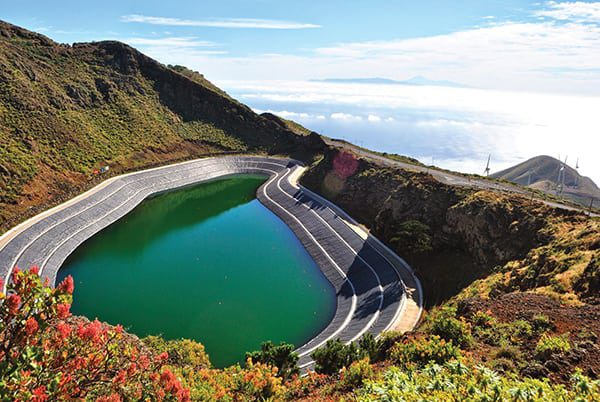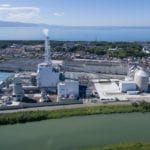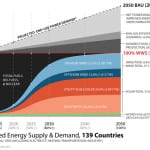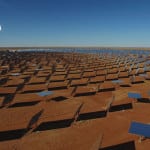El Hierro, the smallest island on Spain’s Canary archipelago, in June became what developers say is the first energy-isolated territory to power itself solely with renewables.
The project, which was conceived in 1997 with construction officially beginning in 2005, entailed building a unique wind-hydro system consisting of a five-turbine, 11.5-MW wind farm, two water reservoirs (Figure 4), a pumping unit, a hydropower plant, and a seawater desalination plant. (The island also has a fuel oil power station for backup generation.)
Several islands around the world are turning to renewables for power, but El Hierro is the first to secure a “constant supply” of energy using only wind and water power, experts say. The pumped storage system uses surplus power from the $110 million wind farm to pump freshwater from the reservoir near the harbor to a larger one about 2,300 feet above sea level. When output from the wind turbines drops, water is released through channels to the lower reservoir through turbines to generate power.
Developer Gorona del Viento S.A. says the project’s main success factor is “related to the involvement in the project of a wide range of partners, both political and technical.” The company is owned 60% by the Council of El Hierro, 30% by Endesa, the Spanish subsidiary of Italy’s Enel, and 10% by the Canary Islands Institute of Technology.
The feat marks a major development for Spain as well, which today generates about a third of its power from renewables but has struggled to contain surging costs of subsidies for renewable generators.
This June, as part of broader reforms announced in July 2013, Spain adopted a decree to overhaul its subsidy system for renewable generators. The decree caps the earnings of all 1,400 existing renewable power facilities in the nation, granting generators a rate of return of about 7%% over their lifetimes. That rate, which may be revised every three years, is based on the average interest of a 10-year sovereign bond, plus three percentage points.
Industry Minister Jose Manuel Soria said the measures were necessary to grant stability to the system, guarantee reasonable returns on investment, and provide certainty to the industry. Subsidies had to be revised or the system would have soon gone bankrupt, he said.
The measures would save the country $2.31 billion in 2014 alone. According to the Ministry of Energy, Spain has already paid $76 billion to renewable producers since 1998 and will pay another $193 billion over their lifetime. The retroactive move is not without opposition, however, as some renewable companies are challenging the reforms in the Supreme Court.
—Sonal Patel, associate editor (@POWERmagazine, @sonalcpatel)











